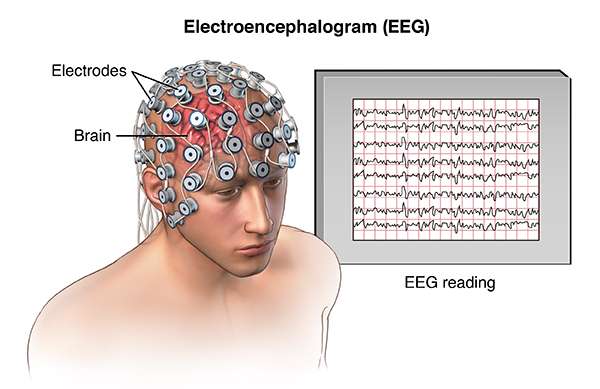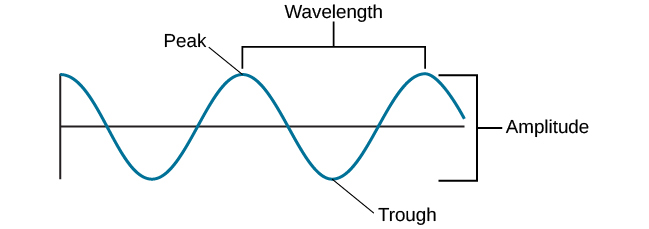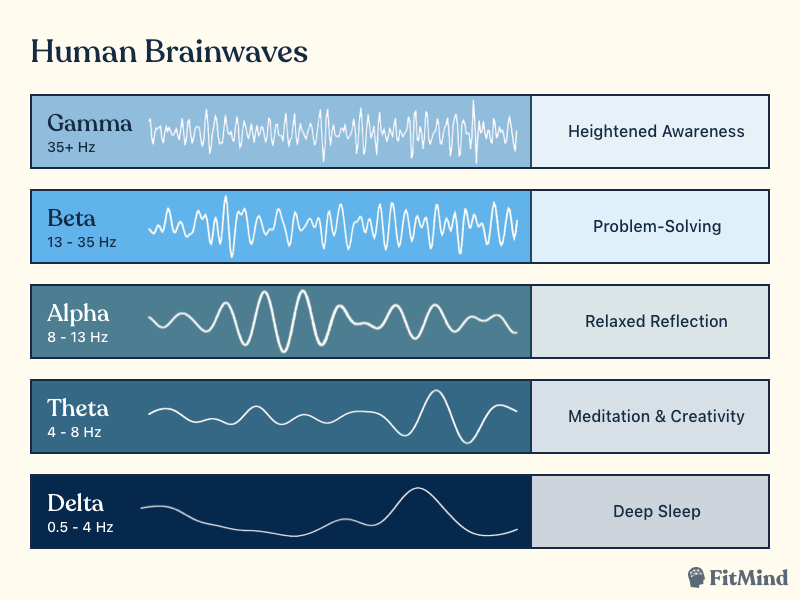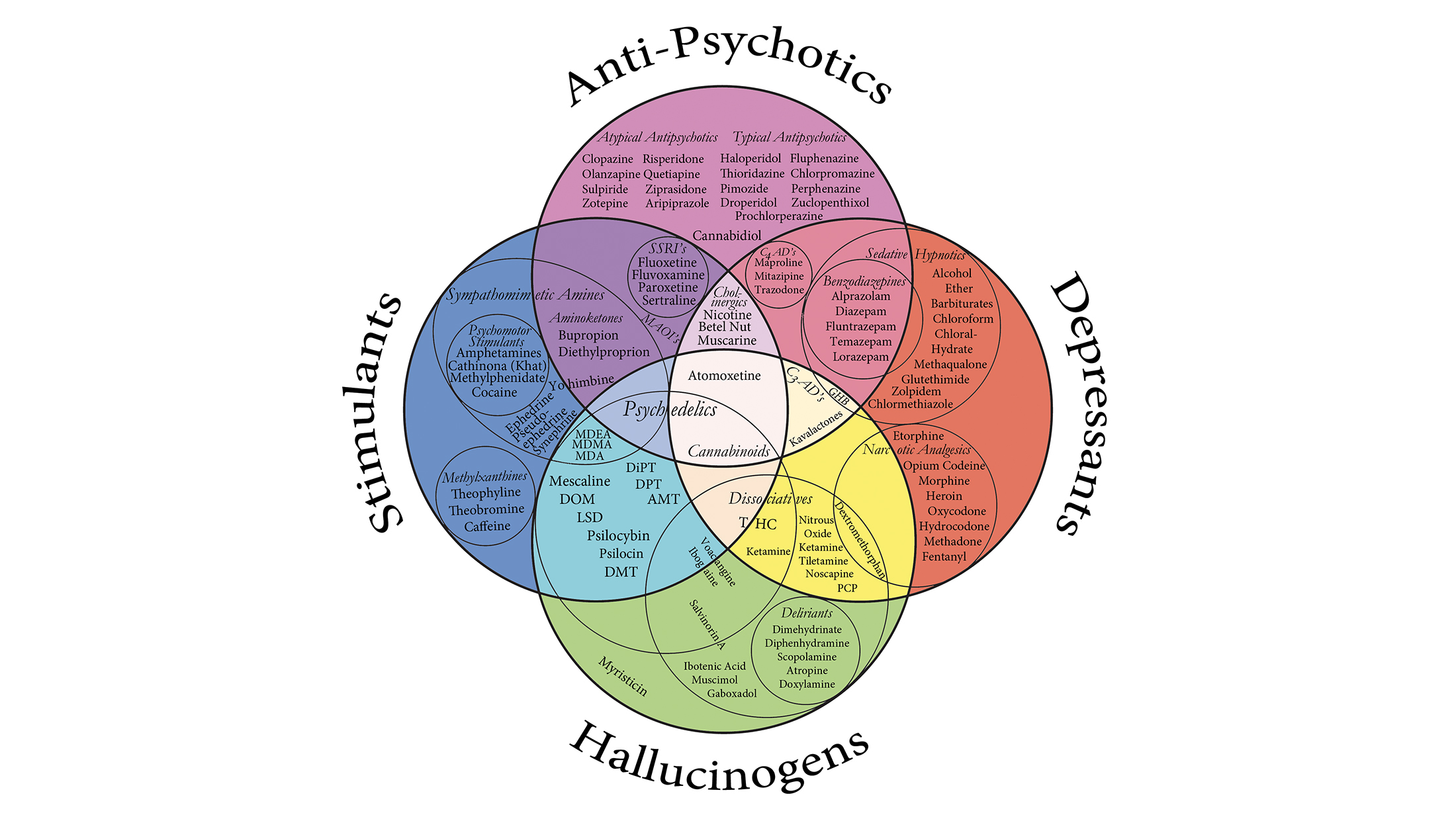“用户:Grotton JXz Donbrako/Psychology/Chapter 5”的版本间的差异
(补充完成) |
(小细节修改()) |
||
| 第111行: | 第111行: | ||
---- | ---- | ||
====其他==== | ====其他==== | ||
| − | *Morphine, heroin, methadone, codeine are all similar in chemical structure to opium, which comes from a [[ | + | *Morphine, heroin, methadone, codeine are all similar in chemical structure to opium, which comes from a [[zhmoe:Poppy_Pipopapo|poppy()]] plant. |
*Opiates are depressants which cause drowsiness and a euphoria associated with elevated endorphin levels. | *Opiates are depressants which cause drowsiness and a euphoria associated with elevated endorphin levels. | ||
*Fairly addictive and withdrawal symptoms can be severe. | *Fairly addictive and withdrawal symptoms can be severe. | ||
2022年3月9日 (三) 06:36的最新版本
目录
页面介绍
本页面所转载文章出自APPsychPrep网站所分享幻灯片[1],由GJD转载。
转载时有改动,无任何原内容省略。
正文
History of Psychology: Dualism and Monism
- Dualists believe humans (and the universe) consists of thought and matter (each independent of one another).
- Matter is everything that has substance; thought is a non-material aspect that arises from matter.
- Monists believe that everything is the same substance, and thought and matter are one in the same thing.
States of Consciousness
- Consciousness is our level of awareness about ourselves and our environment.
- Conscious level: Information about you and your environment that you are currently aware of.
- Nonconscious level: Bodily processes, like heart rate and breathing, that you are not usually aware of.
- Preconscious level: Information about you or your environment that you are not currently thinking about but you could be; What's your favorite color?
- Subconscious level: Information that you are not consciously aware of, but researchers know exists due to our behavior – Mere Exposure Effect as an example.
- Unconscious level: Psychoanalytic theory suggests some events and feelings are unacceptable to our conscious minds and are repressed into the unconscious mind (examples, sexual fantasies, hurtful memories, embarrassment, etc.).
- Circadian Rhythm: During a 24-hour day, our metabolic processes follow a certain pattern.
- One way we can study the circadian rhythm is by using an electroencephalograph(EEG).
- An EEG is a device that measures and records the electrical activity of your brain.




| Drowsiness; Small wave frequency (4-7hz). On EEG and NREM sleep. | |
| Asleep; EEG dominated by thetawaves, but hz increases, high energy burst on EEG (sleep sprindles) and NREM sleep. | |
| Delta waves (1-4hz); Less sleep sprindles, NREM sleep. | |
| Deepest sleep of NREM, delta waves, hard to wake, growth harmones released here, slow wave sleep (SWS). | |
| Fast desynchronised EEG, body effectively paralysed, dreaming more likely to occur. | |
| Move back to REM, repeat pattern, approximately every 90 minutes, ⅘ (80%) a night. |

Sleep Disorders
- Insomnia: is the most common sleep disorder where an individual has persistent problems getting to sleep or staying asleep.
- Treatment: Reduce intake of caffeine and other stimulants, exercise, maintain a consist sleep pattern, and sleeping aids
- Narcolepsy: Individuals suffer from periods of intense sleepiness and may fall asleep at unpredictable and inappropriate times.
- Treatment: Medication and changing sleep patterns to include naps at certain times of the day.
- Sleep Apnea: Apnea causes a person to stop breathing for short periods of time during the night; the person then wakes up, gasping for air, and then goes back to sleep, possibly without even noticing.
- The person may not be able to have sustained deep sleep (delta wave/REM) and this can interfere with memory consolidation.
- Sleep Apnea can be treated with a respiration machine that provides air for the person as he or she sleeps.
- Night terrors are nightmares where the individual wakes up in a panic.
- Somnambulism is sleep walking. Occurs more commonly in children and occurs during the first few hours of the night in stage four sleep.
- Night terrors and somnambulism usual fade with age.
Dream
- Dreams are the story-like images we experience during sleep.
- Dreaming probably occurs most often during REM sleep, as evidenced by people reporting dreams most often after being woken by researchers during REM sleep.
- Freudian psychoanalytical theory emphasizes dream interpretation as a method to uncover the repressed information in the unconscious mind.
- Freudian method (psychoanalysis) is subjective, hard to test, and psychoanalysis does not have much scientific backing.
- Manifest Content is the literal content of our dreams
- If you dream about showing up at school naked, the manifest content is your nudity.
- Latent Content is the unconscious meaning of the manifest content
- Showing up at school naked could mean that the person feels vulnerable or anxious at school.
- Activation-Synthesis Theory: Our cerebral cortex is trying to interpret random electrical activity we have while sleeping; that is why dreams sometimes seem random and fictitious.
- Information Processing Theory & Dreams: Dreaming falls somewhere in-between Freud's psychoanalysis and Activation Synthesis Theory.
- Information processing theory points out that stress during the day will increase the number and intensity of dreams during the night.
- Proponents of information processing theorize that perhaps the brain is processing daily stress and information during REM dreams.
- Posthypnotic Amnesia: When people report forgetting events that occurred while they were hypnotized.
- Posthypnotic Suggestion: A suggestion that a hypnotized person behave in a certain way after he or she is brought out of hypnosis.
- Role Theory states that hypnosis is not an alternate state of consciousness at all. Role theory suggests that some people are more easily hypnotized than others; this is called hypnotic suggestibility.
- State Theory suggests that hypnosis meets some parts of the definition for an altered state of consciousness.
- Hypnotists seem to be able to suggest that we become more or less aware of events and our environment.
- (Ernest Hilgard's) Dissociation Theory suggests that hypnosis causes us to divide our consciousness voluntarily.
- One part or level of our consciousness responds to the suggestions of the hypnotist, while another part or level retains awareness of reality.
- When investigating hypnotism and pain control, Hilgard asked hypnotized participants to put their arm in an ice water bath; the hypnotized participants reported feeling no pain, but when Hilgard asked them to lift their index finger if any of them felt pain, most of them lifted their finger.
- Demonstrated the presence of a ‘hidden observer’ or some different level of consciousness.
- Psychoactive drugs are chemicals that change the chemistry of the brain and body.
- Drugs are just chemicals. They are not inherently good or bad.
- The route of administration affects the drug’s effect.

- Why do doctors use intravenous and gas masks to deliver drugs to patients?
- The brain is protected from certain chemicals in the bloodstream by thicker walls surrounding the brain's blood vessels.
- This is the blood-brain barrier.
- Psychoactive drugs are able to pass this barrier and get into the brain.
- Molecules either mimic or block naturally occurring neurotransmitters in the brain.
- Agonists: Drugs that mimic neurotransmitters.
- Antagonists: Drugs that block neurotransmitters.
- No matter what mechanism they use, drugs alter the natural levels of neurotransmitters, and affect consciousness.
- Tolerance: A physiological change that produces a need for more of the same drug in order to achieve the same effect.
- Tolerance will cause withdrawal symptoms.
- Withdrawal symptoms are a craving for a drug's effect, and range from mild to severe depending on the potency/type of drug and the duration in which it was used.
- Stimulants are drugs that speed up bodily processes/metabolic activity.
- For example, cocaine, amphetamines, and nicotine (nicotine is actually both a stimulant and a depressant, but for the AP psych test it is a stimulant).
- Depressants slow down metabolic processes.
- Examples are alcohol (has stimulant like effects at first, but is a depressant at higher doses), barbiturates, and heroin, morphine.
- Hallucinogens do not necessarily speed up or slow down the body; they change perceptions by interfering with sensory processing systems in the brain such as the thalamus.
- Examples: LSD, Peyote, Psilocybin (mushrooms), marijuana (for AP test).
其他
- Morphine, heroin, methadone, codeine are all similar in chemical structure to opium, which comes from a poppy() plant.
- Opiates are depressants which cause drowsiness and a euphoria associated with elevated endorphin levels.
- Fairly addictive and withdrawal symptoms can be severe.

Drugs: Reverse Tolerance
- Some amount of certain drugs can remain in the body for weeks: ingesting more THC at a later period may add to the lingering amount.
- THC/Tetrahydrocannabinol is the active compound in marijuana and stores itself in fat cells.
- The addition of more substance to the lingering amount is sometimes called reverse tolerance because the second dose may be less than the first, but cause the same or greater effects